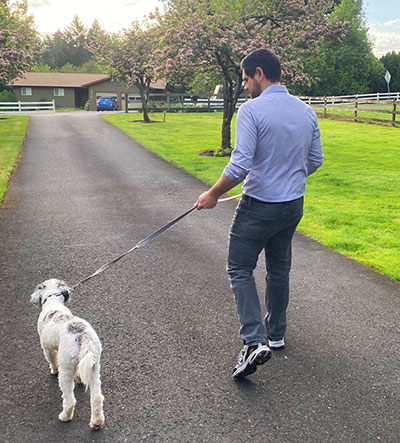 This week we will discuss strategies to speak your truth with confidence. If you did not read last week’s post on Identifying your Truth, I highly encourage you review that post first, as the first step in communicating your truth is knowing your truth.
This week we will discuss strategies to speak your truth with confidence. If you did not read last week’s post on Identifying your Truth, I highly encourage you review that post first, as the first step in communicating your truth is knowing your truth.
Communicating your truth comes with three important considerations. Think of your truth as firm and solid ground you can stand on. When you speak from it, your voice does not quaver. Instead you draw confidence from standing on this ground. Others have the same opportunity to stand on their solid ground, which is something we must keep in mind when we speak our truth to others. Finally, there is ground in the middle that is perhaps less formed and is able to be molded and constructed. This middle ground is within reach of both (or all) parties and can only be built into solid ground together. These tips below will discuss our ground, others’ ground and our shared middle ground in more detail.
Tip No. 1: Communicate from the ground you are standing on
If you have truly identified your truth , you will know your truth is something that cannot be argued or disputed. In my example from last week, my truth was providing security for my family in a situation regarding my fiancé and I discussing dog-walking schedules. Unlike my solutions or ideas on how to best accomplish providing security, no one can dispute I value providing security for my family. That is mine to hold and no one can move me from that ground. Others may hold different truths, but they cannot change the ground I stand on. If I were to communicate my desire to take the dog on morning walks before work, which is fueled by this truth (again, see last week’s post for context), my fiancé may be able to argue or dispute whether my idea has any merit, because it may infringe on a truth she holds. In this scenario, my dog walking in the morning idea prevented my fiancé from her typical morning routine, which surely has a deeper truth fueling her.
When attempting to communicate your truth, speak from the immovable ground you stand on: “I will explore all possible avenues to provide security for my family.” From here you can speak with confidence and conviction, people are more likely to hear what you are saying and you may even find that others may be standing on similar ground and are simply taking a different approach to satisfy the same value or need.
Tip No. 2: Respect the ground others are standing on
 There is almost always something deeper that we hold and let fuel our communications. So, just like we need to identify and communicate our own truth, we must be aware other people are standing on ground that represents their truth as well. We do not always see the truths of others, but we should respect that there is typically something deeper fueling the communication and actions of others. Next week we will talk about how to help identify the truths of others, but for the purposes of this post all that is important is that we recognize these truths exist even if we are not able to see them or disagree with the communication or action associated with their truth. Through recognition, we can move toward respecting that others hold truths that may be different than our own and we can be curious and open to better understanding the ground they stand on.
There is almost always something deeper that we hold and let fuel our communications. So, just like we need to identify and communicate our own truth, we must be aware other people are standing on ground that represents their truth as well. We do not always see the truths of others, but we should respect that there is typically something deeper fueling the communication and actions of others. Next week we will talk about how to help identify the truths of others, but for the purposes of this post all that is important is that we recognize these truths exist even if we are not able to see them or disagree with the communication or action associated with their truth. Through recognition, we can move toward respecting that others hold truths that may be different than our own and we can be curious and open to better understanding the ground they stand on.
Tip No. 3: Acknowledge areas of potential compromise
The ground we are standing on is solid to us, and the ground other people stand on is solid to them. However, the ground in the middle is malleable and flexible. It can be molded by all parties involved. To be able to co-create and shape this middle ground, it needs to be defined with clear boundaries, just like how we identified our truth. An important way to identify the middle ground in collaboration with others is by communicating what the middle ground looks like to you. Where you are flexible in this situation?
In my example about providing security for my family and morning dog walks, I am not flexible on providing security from my family. This is my truth. But I am flexible on what morning routines and the dog walking schedule looks like. Therefore, I can communicate:
“I have a priority to provide security for my family and this is something I cannot budge on. I have an idea on how our morning routines could help us accomplish this. However, I am open to exploring what morning routines and dog walking schedules would look like to be supportive for all members of the household. I would ask that as we discuss this, we take into consideration how our morning routines might further our ability to provide security for our family.”
What I am doing in this communication is clearly standing on my truth, while leaving room for my fiancé’s truth to be involved by inviting collaboration and conversation on how we build the middle ground together.
Communicating your truth can be challenging because we are often tricked into thinking our truths are about the ideas, opinions or point of views we have rather than the values we hold. Clearly identifying our values underneath our ideas takes intentionality. But once we find it, it can become a source of great strength from which we can communicate, turning our potential disputes and disagreements into collaborative conversations that prioritize the truths and values we all hold.
Luke Wiesner is the UC Merced Conflict Resolution Coach, a private resource for staff members who are interested in having a partner to support workplace challenges or conflicts. This service is voluntary, and you can partner with the coach by yourself or with fellow university employees.




